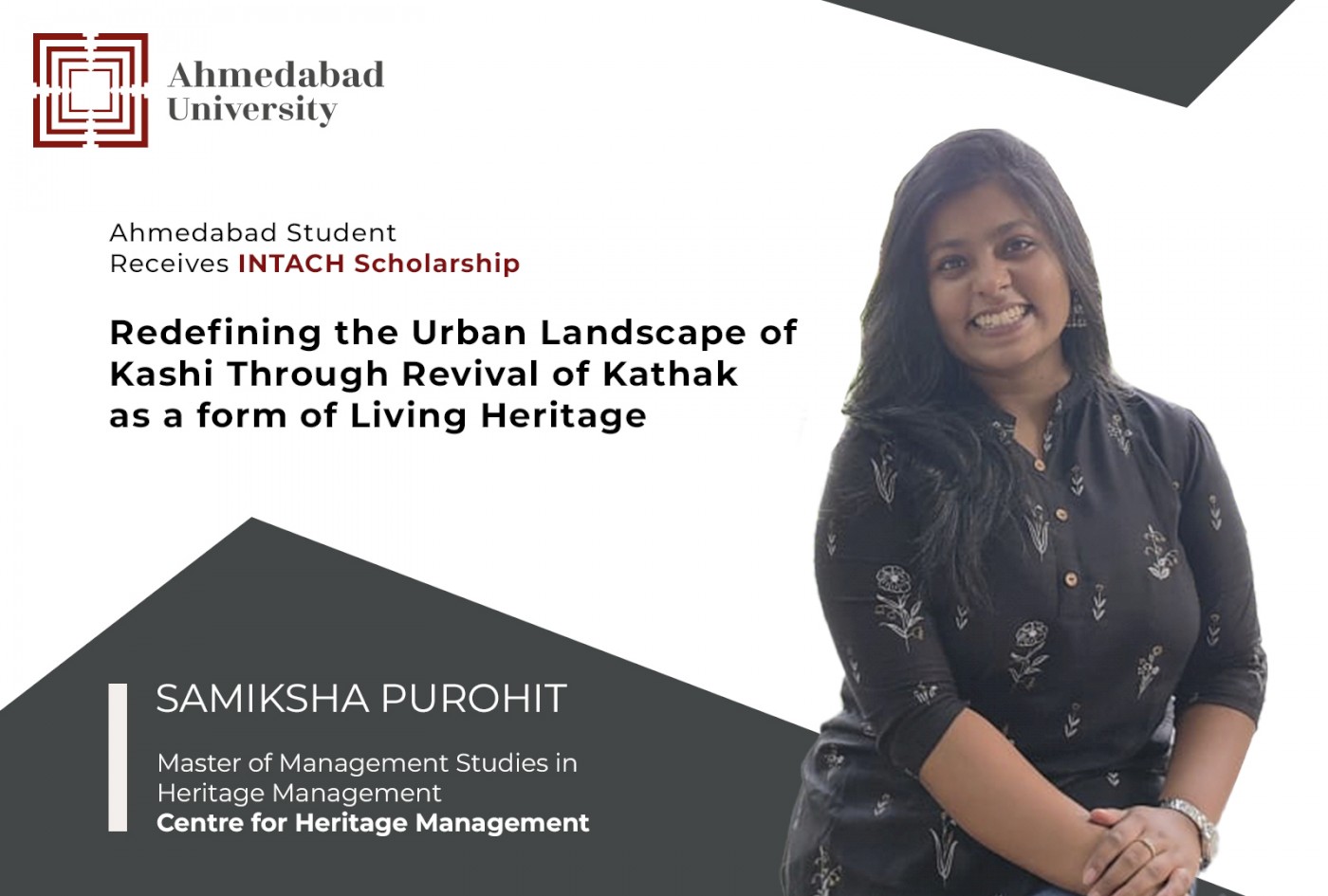
With a visharad degree in Kathak, history graduate Samiksha Purohit had always wanted to work on something that allowed her to blend her knowledge of both these subjects and use them to create social impact. Pursuing her MMS in Heritage Management at Ahmedabad’s Centre for Heritage Management, Class of 2022, has given this Delhi girl precisely that opportunity. Samiksha has recently received a Scholarship worth Rs 3 lakhs from the Indian National Trust for Art and Cultural Heritage (INTACH) to research the topic ‘Redefining the urban landscape of Kashi through revival of Kathak as a form of living heritage,’ also the theme for her master’s thesis.
Samiksha says that studying the Indian classical dance form, Kathak, as a living and evolving heritage inspires her. While there have been numerous extensive studies on Varanasi (also known as Kashi in ancient India), she expects her research to fill the lacunae that exist. For instance, she says, Varanasi has never been studied through Kathak though its Benaras Gharana (form) has an ancient legacy. “Even if Kathak has lent itself to any research on Varanasi, it has been only about the documentation. I am bringing to the limelight the community, which is the living heritage, and observing the modern elements that have brought about changes in this community and the form,” says Samiksha.
The year long research will have Samiksha work in conjunction with the Varanasi Development Authority creating backend databases and referral research work for the Varanasi Development Master Plan 2031. It will also involve documenting and safeguarding intangible heritage in physical spaces and retaining Varanasi’s authenticity as a cultural landscape. Importantly, it will include building strategies for real people, those associated with the art form – dancers, musicians, instrumentalists, and producers of instruments, among other tangible accessories related to Kathak.
Ever since 2003, when UNESCO recognised intangibles as much a part of the heritage as tangibles, there was a marked shift in studying nature-culture, according to Samiksha. “Even then, the percentage of intangibles in the study was meagre. If at all intangibles were being studied, it was mainly for documentation purposes. Kathak is a legacy, and that legacy needs to be preserved. The concluding remarks in my thesis are that intangibles are of paramount importance, and we must study them not as a separate entity but as one, with the tangibles,” she says.